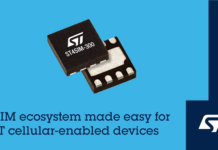
We already have billions of mobile phones connected to the internet. The next wave is of billions of web-connected devices (also referred to as Internet of Things or IoT), generating an immense amount of information, which can then be used to improve the overall value proposition of the product on offer, in a few years’ time.
While there is a lot of buzz about IoT and the Artificial Intelligence (AI) that provide the promise of delivering an unforeseen value, only a few areas have shown real promise.
It is a well-established fact that start-ups are very nimble and at the forefront of innovation. Such innovation is at the centre stage when it comes to identifying the real value proposition and working towards delivering this long-held promise of IoT.
Here is a list of 5 reasons why big enterprises should look towards IoT start-ups and prepare themselves to enter the web-connected age:
Identifying and Eliminating the Inefficiencies
A big enterprise has huge operations with little visibility of how efficiently these operations run. IoT can enable collecting useful information which can then be used to identify and eliminate the inefficiencies in the system.
For example — compare your phone bill with your electricity bill; the former provides details and insights into every penny spent while the latter just gives a monthly consumption (even though the latter is of much higher proportion).
For a corporate office with 100s or 1000s of outlets or offices spread across the globe (e.g. supermarkets or QSR or banks), millions of dollars are spent on electricity bill with no real visibility into how optimally the operations are handled — Are ACs starting and stopping at the right time? Is right temperature maintained in the customer areas or the refrigeration units? Can the glowing sign be automated to automatically turn on at sunset time and switch off at the sunrise time? A web-connected system collecting real-time data across these outlets can provide visibility and allow for setting automated control rules over the internet from a central location to ensure optimal operations and reduce energy spends by up to 30%. Simply put “If you can’t measure it, you can’t improve it”. IoT enables you to take measurements at all levels – providing you with “dark data” unseen before.
Uberising Your Product to “As a Service”
Uber has shown the world how ownership of a product is a dated phenomenon in today’s world. The world is shifting from ownership to using products as a service. We already see several people offering their solution with upfront CapEx or with a recurring OpEx – a good example is solar plants where you either pay upfront for the panels or you pay for each unit of energy consumed. Should Daikin be selling the ACs or selling the cooling? Can CEAT charge for each km of a drive (with lifelong maintenance included) or should they continue to sell tyres? IoT will enable real-time data collection (like how mobile phones with GPS allowed Uber to connect the rider with the driver) that is critical for converting any product to “as a service”.
Improving Customer Insights
Several companies follow the mantra of ” Web connectedcustomer is king” but only a few have insights about their customer’s experience with their product and what more can be done to improve this experience. If the clothing company can get to know the quality of detergent that is used to wash the clothes they sell and can send an alert when they use a low-quality detergent having a negative impact on the color, customer awareness can be improved (beyond simply putting a tag on expecting the customer to dry clean tWeb-connected things can provide such valuable insights that can improve customer experience.
Developing Solutions Around Your Product
When things get connected, products can be enhanced to provide solutions. DELL was into selling servers which were disrupted by Amazon Web Services/ Microsoft/ Google selling virtual machines on the cloud. Such cloud infrastructure is now getting disrupted by cloud-based solutions. Customers do not need virtual machines but need a solution to solve their transportation problem or their accounting problems. There are only a handful of such solutions that Microsoft or AWS can develop on their own. Both already have an active partner program to help them quickly innovate on solutions around their product which provides real value to the end customer and in the process increases the consumption of their primary product – virtual machine.
Collecting Usage Information to Improve Product Offering
Consider an Air Conditioning company that currently is unaware of how a specific model of their AC performs in different climate zones in different geographical areas. Different areas in India have different climates and the information on how each model is performing in each of these climatic conditions and under different usage scenarios can be valuable information that can be used for research and development of new products.
Be it a networking company like Cisco, or telecom providers like Airtel or Vodafone, or cloud providers such as AWS or Microsoft – they all have realized the criticality of partnering with start-ups in the IoT domain. Do you want to be an audio company that could not foresee streaming audio coming in and completely changing the way people consume music or do you want to be a telecom giant that created a huge demand for data consumption and in the process disrupted the whole telecom segment? The choice is yours – Ignore this next wave of IoT at your own peril.
Leverage what you have — big market outreach and provide it to the IoT start-up in return for the innovation they bring in — it’s a win-win situation.


















